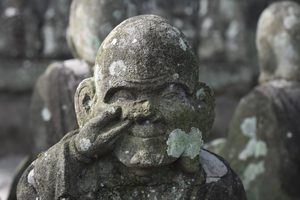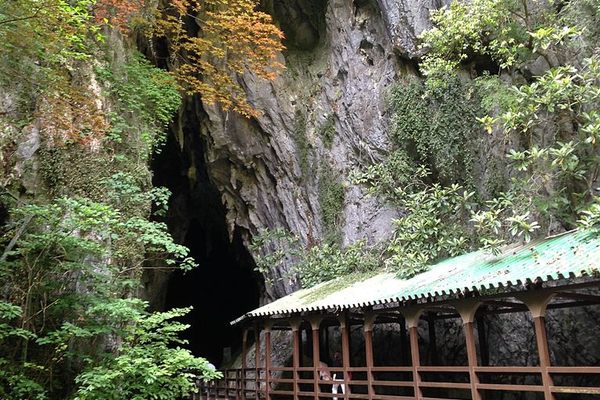About
Yoshimi Hundred Caves is a cluster of late Kofun period tombs carved into a sandstone hillside, loosely resembling Cappadocia’s underground city. Designated as a National Historic Monument in 1923, it's the largest grave cluster in Japan, with 219 burial caves known today despite its name.
The Hundred Caves were first excavated in 1887 by Shōgorō Tsuboi, the first anthropologist in Japan and pioneer of Japanese archaeology. He proposed a theory that the caves were inhabited by the Koro-pok-guru, a race of diminutive people in the folklore of Ainu people, but it was refuted in the following decades.
The purpose of the mysterious and uneven caves is still uncertain, as some of the walls are covered with old graffiti. Near the end of World War II, about one-tenth of the complex was destroyed to make space for a military aircraft engine factory. This tunnel goes on for about 0.8 miles, stretching towards the nearby ruins of Matsuyama Castle.
Another attraction found within the site is Schistostega moss or goblin gold (hikarigoke), which is quite rare and known for its luminescence glow. The cave complex was designated as one of the few Natural Monuments of Japan in 1928.
The site is partially open to the public today, including many of the caves, part of the factory tunnel, and two small-scale museums. One exhibits artifacts recovered from the tombs, while the other displays a miniature diorama of Matsuyama Castle as it once looked during its heyday.
Related Tags
Know Before You Go
The entrance fee is 300 yen for adults. Wasps and snakes are sometimes seen in the area, so be careful of your surroundings when climbing the hill to see the upper parts of the site. The caves are located less than 30 minutes by foot from the Higashi-matsuyama Station, but you can also take a bus and get off at the Hyakuana-iriguchi bus stop.
There are two other interesting spots nearby. One of them, Iwamuro Kannon, is a nearly abandoned 17th-century Buddhist temple with a cave full of stone statues. The other, Gankutsu Hotel, is a large structure that was chiseled into the sandstone cliff during the 1900s. Whether you walk to the cave or take a bus, you’re going to pass by these, so consider taking a look if you have some time to spare.
Hidden Japan: Sado Island, Nara & Kyoto
Explore a different side of Japan.
Book NowPublished
March 19, 2020

































